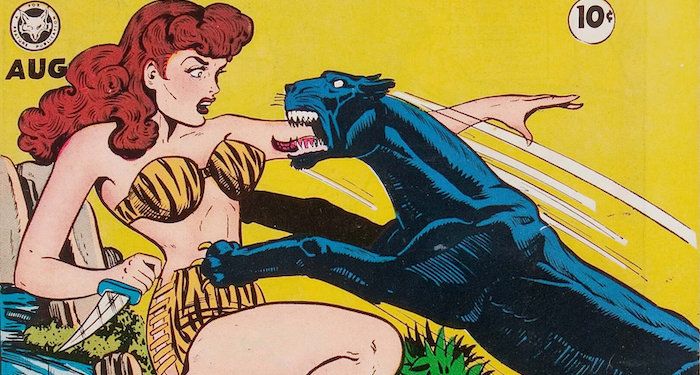
Battle Royal: Ranking the Jungle Queens of Comicdom
Tarzan ain’t the only one swinging from vines and wearing skimpy furs. In the Golden Age of Comics (the 1940s, mostly, with bits of the ’30s and ’50s tagged on at either end), comics played host to a large number of jungle characters, both male and female. The men tended to be called “lord of the jungle” or “jungle boy,” while the women could be girls, princesses, goddesses, and, of course, queens.
As you may imagine, this genre is rife with racism of all kinds. You’ve got a hefty dose of the white savior trope: all of the jungle queens/girls/boys/lords are white and “take care” of Black natives who are too gullible or foolish to care for themselves. The Black characters are drawn in the stereotypical style of the day, and while I tried to avoid selecting images with the worst racism, some might have slipped through.
Despite their weak points (which were not regarded as weak points back then), jungle comics were extremely popular, due to both the exciting stories and the scantily-clad women (not in that order). They have left a legacy in the form of characters like Marvel’s Ka-Zar, who carry on the proud tradition of befriending big toothy animals and stabbing at anyone who invades “his” jungle.
Not being too familiar with this genre, I thought it was time I learned. And what better way to learn than through theoretical violence? I picked six “jungle queen” comics from Comic Book Plus, which features a vast array of public domain titles, at random. Then I put their names in a mug and pulled them out two by two to determine who would be going up against whom. Finally, I read each queen’s debut story to determine which one would come out victorious in a battle with the other.
So here we go, folks. Let’s find out which queens are tough enough to rule them all!
Sheena, Queen of the Jungle Vs. Nyoka the Jungle Girl
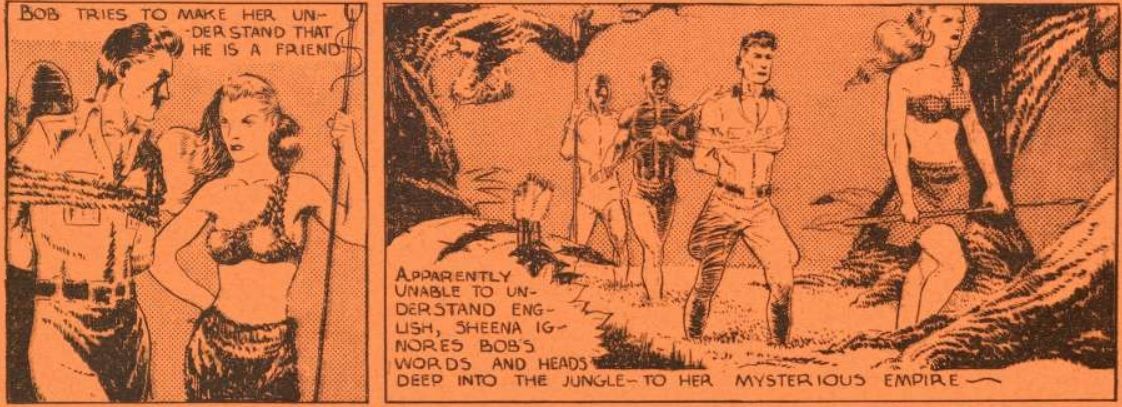
Sheena: Sheena first appeared in a British magazine, Wags, but we’ll be looking at her U.S. debut in Jumbo Comics #1-4, published by Fiction House in 1938.
Haughty and ruthless, Sheena rules with an iron fist. When two white men stumble into her clutches, she takes them hostage and only lets one go to find out what some other white people are doing so close to her “empire.” While Sheena does get to do a little fighting, mostly she just points at her enemies and has men do the fighting for her. She even needs to be rescued by one of the two white guys. Boo! Show some initiative!
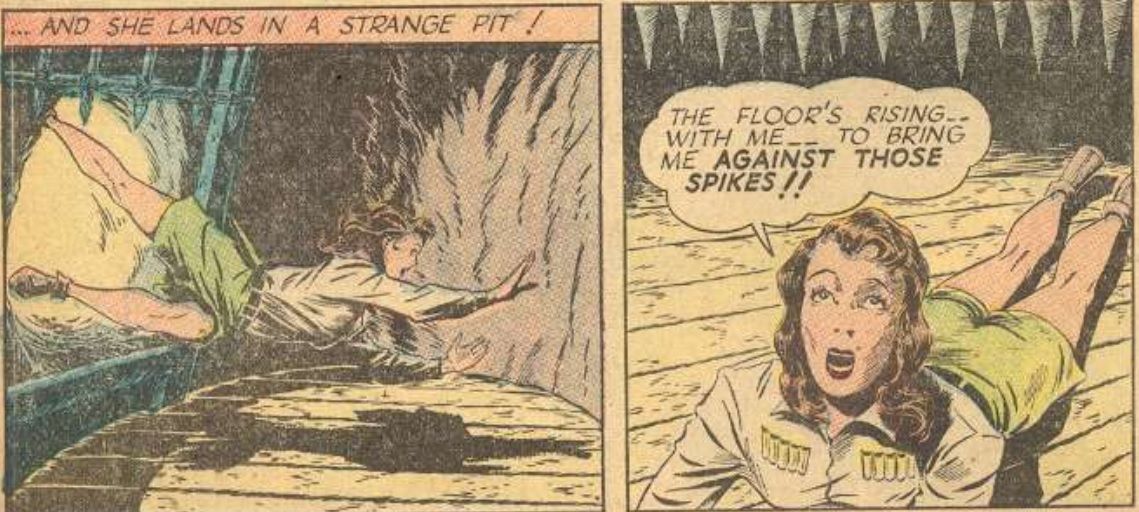
Nyoka: Nyoka has the distinction of first appearing on film: Jungle Girl, in 1941. She got her own comic — first called Jungle Girl, then Nyoka the Jungle Girl — published by Fawcett in 1942. Despite being a “jungle girl,” Nyoka’s first adventure is set in the desert. I have been lied to.
So Nyoka is the daughter of a missing scholar, which makes her the target of two different groups — one good, one bad — who want her to translate an important papyrus for them. She then becomes a pawn in her own title, constantly falling into traps or getting into trouble that only a big strong man can save her from.
Fight!: Gotta give Sheena props for being the oldest jungle queen on the list and paving the way for the others. But despite supposedly being “fierce in battle,” she’s the type of queen who delegates rather than doing much herself.
Against anyone else, I’d say Sheena is the loser, but Nyoka is not just a truly pathetic heroine; she isn’t even a real jungle girl. So Sheena wins, mostly by default. All Sheena would have to do is order her boyfriend to beat up Nyoka’s boyfriend, and that’s the end of that.
Rulah, Jungle Goddess Vs. Taanda, White Princess of the Jungle
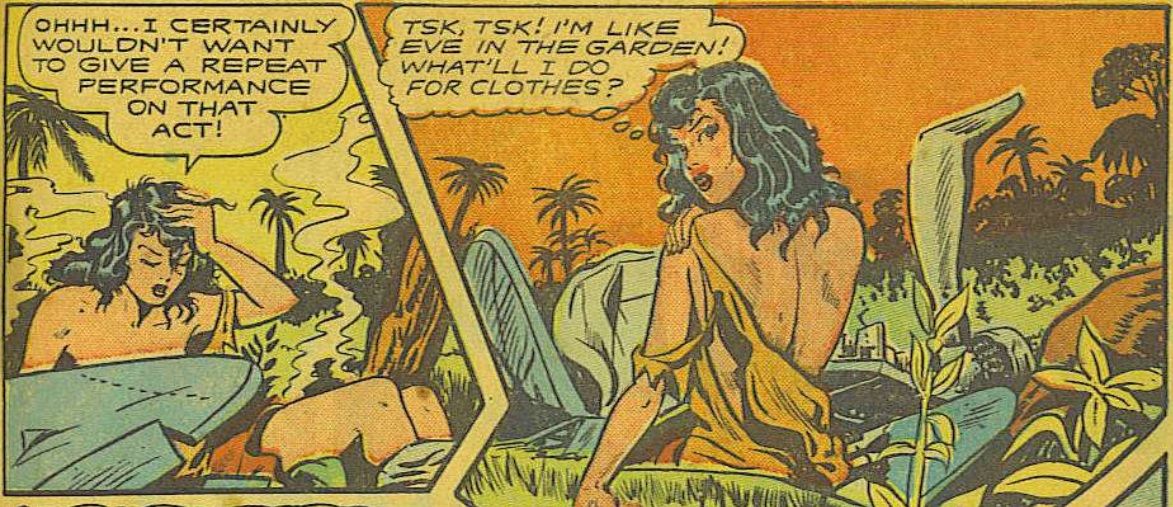
Rulah: Debuting in Fox’s Zoot Comics #7 in 1947, Rulah is notable for being created by Matt Baker, the most prominent Black artist of the Golden Age.
“Rulah” is really Jane Dodge, a bored rich pilot who crashes her plane in the African jungle, which ruins her clothes. Baker was known for drawing women in skimpy outfits, so this is an excuse for him to put Jane in a bikini.
After she prevents a war by exposing the scheme of some other white woman (whose presence is never explained), the natives insist that Jane prove her strength by fighting a jaguar to the death. She does, and they declare her a goddess, which convinces her to stay forever.
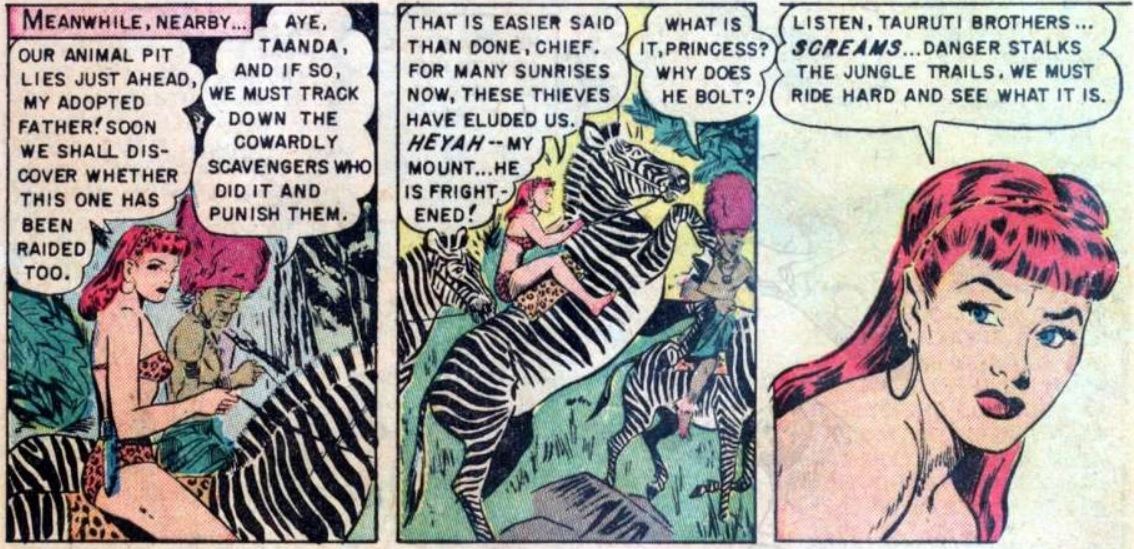
Taanda: Brought to you by Avon, White Princess of the Jungle ran for five issues in 1951-52.
After her explorer parents were killed, Taanda was raised by a local chief as his own. Now she knows how to exercise wisdom and mercy as well as do more down-to-earth things like wrestling gators. All of those skills are put to use when she has to stop a white poacher from stealing animals that her own tribe had trapped first.
Fight!: Rulah would definitely win Miss Congeniality since she has the best personality of the jungle queens — a real go-getter, she is. And I give White Princess credit for drawing the Black characters to look like real people, even if it’s still pretty racist.
But that’s not what this contest is about. I think I have to give it to Taanda here. She was raised in the jungle (which has zebras in it now, I guess), whereas Rulah is still a newcomer learning her way around. Taanda’s superior knowledge of the environment provides her with a critical edge over Rulah’s admittedly impressive improvisational skills.
Fantomah, Mystery Woman of the Jungle Vs. Tegra, Jungle Empress
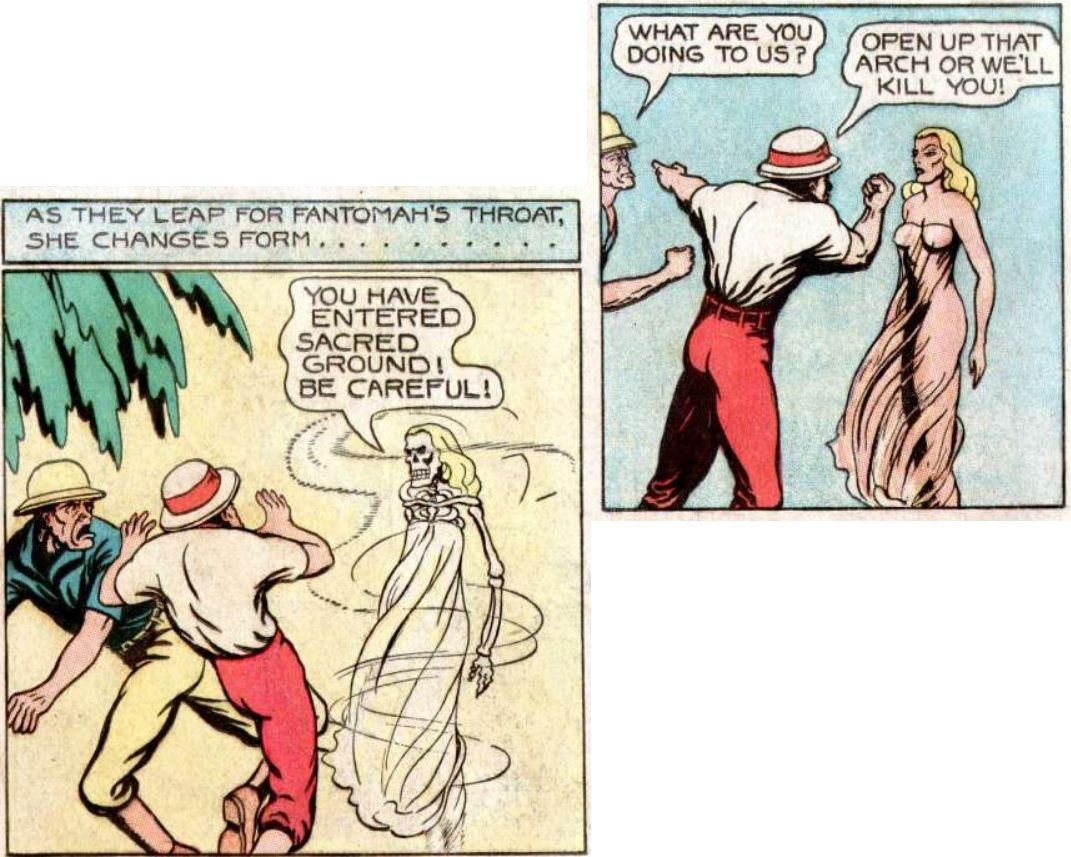
Fantomah: Debuting in Fiction House’s Jungle Comics #2 in 1940, Fantomah is a mysterious spirit who, in her first appearance, serves as a protector of animals. Specifically, she guards the elusive elephant graveyard, guiding dying elephants there and making sure that any poachers who defile the place die horribly.
But her greatest feature is her skull face. As you can see in the panels, she usually appears as a beautiful woman in a sheer dress. But when she’s angry with someone, she turns into a skeleton or a disembodied, floating skull. Absolutely amazing. She does, however, lose points for killing a couple of innocent hunting dogs. They didn’t ask for that!

Tegra: Tegra, Jungle Empress #1 from 1948 is technically Tegra’s only appearance. Fox changed her name to Zegra in the second issue.
If you thought floating skull heads were wild, Tegra spent her debut fighting men from Saturn and their paralysis ray! She has a panther for a pet, swings from trees, and rules over her “people” with nothing more than a big knife. Despite living in the jungle, Tegra clearly has some scientific background, as she correctly identifies the radium dust on the Saturnians’ ship and uses it to defeat them.
Fight!: I’ve been a fan of my girl Fantomah for years, so I’m biased, but Tegra gave her a run for her money in the “bananapants bonkers” department. Tegra is certainly more action-oriented, whereas Fantomah just sort of sits back and watches the poachers get hoisted by their own petard (though it is possible she was influencing their actions through her mystic powers).
That said, Tegra is much more of your average jungle queen, while Fantomah is a supernatural creature. If they crossed paths, Tegra’s knowledge of science would be no match for Fantomah’s ability to lure her to a fitting, ironic end.
Well, I, for one, sure got a lot more variety out of these jungle queen comics than I thought I would. I definitely was not expecting men from Saturn to show up. While the racism inherent in this genre cast a pall over my enjoyment, I did come to regard some of these jungle women with a sort of fondness. In a different setting, I might have enjoyed them even more.
Jane Dodge especially presents a compelling concept: she’s independent, fearless, and clever — and in the public domain. What do you say, readers? Anyone want to take a stab at rehabilitating this “goddess” into a human heroine?











